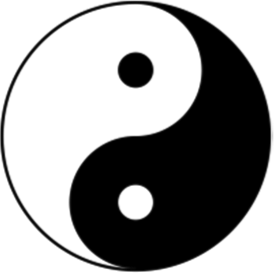Taiwan is a good place to be studying hybrids of western biomedicine and Traditional Chinese Medicine, since there’s established practices that have become accepted over decades. (My personal experience of having been in Taipei is a strong predisposition towards an American style, with Chinese traditions).
Science and Technology Studies (STS) is a well-developed discipline in many universities. I hadn’t considered western medicine as a colonial discipline, yet am an exception in having been advised by both western-trained doctors and a TCM doctor for decades.
A case study is reviewed by Wen-Yuan LIN at National Tsing Hua University (Taiwan) and John Law at the Open University (UK).
Scientific evidence-based biomedicine is often distinguished from traditional experience-based CM [Chinese Medicine], but this is a recent distinction and is not what is happening here.5 People come for CM, but Dr Lee, with her double training, also offers biomedical examinations.6 Traditional herbal and SCM are prescribed. CM is being mixed with biomedicine professionally and pharmaceutically. CM practice is being hybridized. How might we think about this?
5 In fact, until modern state intervention in Taiwan and China, Chinese medicine (CM) was not a unified system but more like an assemblage of various schools of practices loosely connected with classics, techniques and medications shared in varying degrees (Hsu, 1999; Scheid, 2002, 2007; 皮國立, 2012; 林昭庚 et al., 2011).
6 However, unlike their colleagues in mainland China, Taiwanese CM doctors cannot prescribe biomedication and biomedical treatment.
One obvious response is that this is an expression of imperialism. STS has often described the hybridity and heterogeneity of imperialist science, technology and medicine. [p. 805]
Taking blood pressure, and then applying the technique of feeling for four pulses is an example of hybridity.
A nurse comes with a haemadynamometer, while, Dr Lee feels his pulsation in both wrists again. Then the nurse speaks: ‘It’s 102 over 78’. Dr Lee repeats: ‘102 over 78’, and keys the data into her computer. Then she checks the records, looks up at Mr Wang and asks: ‘How about the problem with your leg? Have you brought the examination results?’ Mr Wang gives her his blood test result and a leg scan report.
This is hybridity again. Dr Lee does the ‘four diagnoses’ (sì zhěn, 四診). She smells and listens, looks, asks, and feels Mr Wang’s pulse. This is CM at work. But she also takes his blood pressure and looks at the scan and blood test results. These belong to biomedicine. The different logics and cultural contexts of pulse-taking in biomedicine and CM have been widely explored (Kuriyama, 2002), but how does this work here?
The haemadynamometer and blood tests are tools for specific ways of knowing the body. Their results may lead directly to a diagnosis because they indicate what is wrong with – and usually within – the body: they are used to tease out the underlying causes of ill health. But the four diagnoses work differently. First, they do not look for direct underlying causes. No individual sign leads to a specific diagnosis. Instead, CM explores the person in a specific and located composition of embodied, emotional and social correlations (Zhang, 2007). Particular signs and symptoms are associated with diet, sleep, excretion, lifestyle, the emotions and the practitioner’s own training and contexts. So the four diagnoses do not see symptoms or bodies in causal contexts, but in situations that are themselves complex and correlative (Farquhar, 1994). So Dr Lee looks for what might be causing bodily disturbance, but she is not looking for an indi- vidual cause but trying to locate this in a specific context of correlative composition. This extensive situated correlativity is the second feature of CM. It is hybrid but it is also correlative. [p. 808]
But what should we make of the fact that Dr Lee checks both pulsation and blood pressure? One answer is that there are varying degrees of hybridization between CM and biomedicine. At one end of the spectrum, some CM doctors insist on traditional forms of practice. They prescribe herbal medication, perform the four diagnoses, avoid using biomedical instruments and even write notes in classical language using classical calligraphy. At the same time, others modernize CM by working analytically, using experimental methods and the technologies of modern science and engineering (Lei, 1999; Lei et al., 2012; Ward, 2012; 黃進明, 2007). As we can see, Dr Lee works somewhere between these two extremes. She keeps her medical records on a computer, prescribes SCM, uses biomedical devices and reads biomedical reports, but she still performs the four diagnoses. She also talks of ‘circulation of the blood and qi’ and uses situated correlative reasoning to specify problems. [p. 808-809[
How should we understand this? Our suggestion is that we should neither worry about the presence of biomedicine, nor reify biomedicine and CM as two separate unities, since in practice both are more or less messy (Farquhar, 1994; Mol, 2002, 2008; Scheid, 2002). Instead, and adopting what one might think of as a ‘situated reification’, our tactic is to ask what elements of ‘biomedicine’ and ‘CM’ are actually doing in specific situations. It is almost impossible to avoid all reifications while moving between conceptual systems, because completely dissolving into complexifications loses something important about fairly systematic differences (as between ‘CM’ and ‘biomedicine’). Authors who write about ‘China’ from a ‘Western’ perspective all run into a version of this difficulty (Hall and Ames, 1995). Here the distinction between (‘Chinese’) ‘correlative’ and (‘Western’) ‘analytical’ practices is a ‘situated reification’. Our focus is on how hybridity might work in practice – and then on how this might help us to think about more appropriate modes of betrayal. [p. 809]
Reference
Lin, Wen-yuan, and John Law. 2014. “A Correlative STS: Lessons from a Chinese Medical Practice.” Social Studies of Science 44 (6): 801–24. https://doi.org/10.1177/0306312714531325. [alternate search on Google Scholar]

